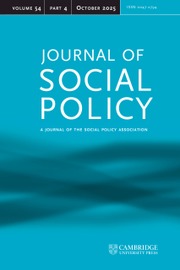No CrossRef data available.
Article contents
Organisational outputs of administrative reforms: disability in Danish job centres
Published online by Cambridge University Press: 29 November 2024
Abstract
Employment rates of people with and without disabilities differ substantially in most countries, and policymakers have tried, with mixed effects, to reduce this gap through different policy measures. However, studies show that governance and managerial reforms also affect implementation of policy. In this study, we examine how the Danish large-scale administrative reform of 2007 has affected the role and structure of the approach of the public employment system (PES) to unemployed people with disabilities. Using Pollitt and Bouckeart’s framework on reform effects, we report on a document analysis of policy papers and a 2019 survey of caseworkers and disability keypersons (N = 453). The analysis identifies few and vague objectives on a process and systems level, with the overall goal being more coherent service delivery. Specifically, a new division of tasks between the state and municipal level was established, including the creation of a disability keyperson at the municipal level to inform and guide job centre colleagues in assisting unemployed with disabilities. In practice, most of the keypersons were doing administrative casework and placed in sections focussed on unemployed with a reduced work ability. Hence, we identify a mismatch between objectives and implementation, questioning whether service delivery has become more coherent.
Information
- Type
- Article
- Information
- Copyright
- © The Author(s), 2024. Published by Cambridge University Press

